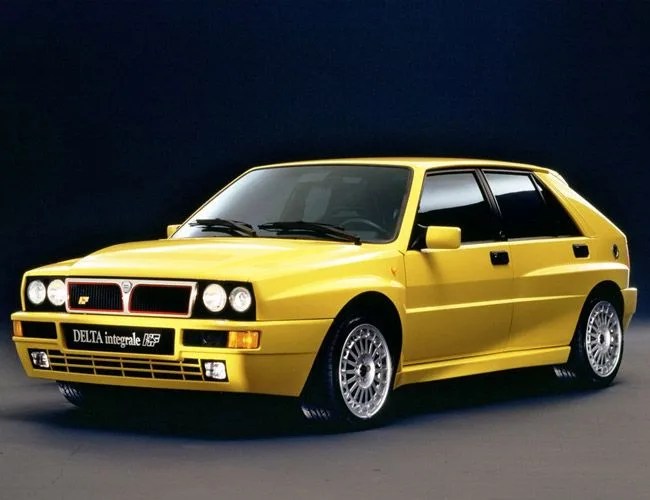Unlike the Audi Quattro, you won’t see a Lancia used in any car commercials to promote a new sedan, and it likely hasn’t graced any teen car fan walls for decades, either. But while the Lancia Delta HF Integrale didn’t sell in big numbers or boast huge power, it is a legend in the world of rallying and it stands as one of the most beloved cars to ever grace both dirt and pavement. The Delta HF Integrale destroyed competitors with abandon, utilizing a neutral chassis and driving dynamics, and commandeering steering that would make a Porsche 911 jealous.
A quarter of a century after its introduction, the Delta HF Integrale still garners mounds of automotive and racing respect, and it elicits covetous feelings whenever a great road-going version shows up for sale. In racing format, this homologation special was a rally weapon to be reckoned with, and it earned a hard and dirty five WRC manufacturer titles between 1988 and 1992, beating the likes of the Ford Sierra RS Cosworth and the Audi 90 Quattro. As a limited-run road car, it stands as one of the best-driving cars in the world — despite its somewhat obscure reputation as a production sports coupe.
MORE DIRTY DRIVERS: The Audi Sport Quattro | The Toyota TRD Pro | The Lancia Stratos

What It’s All About
The Delta HF Integrale was born out of the termination of high-powered, high-speed Group B racing. In that era, the sky was just about the limit in regards to lightness and horsepower output, and manufacturers only needed to produce 200 cars for homologation, which didn’t overburden them with producing many cars for consumers. When Group B ended in 1986, Group A placed greater restrictions on power and required double the cars for homologation. Lancia needed a replacement for its Delta S4 Group B car, which was powered by a supercharged and turbocharged four-cylinder engine with 480 horsepower. Lancia found their temporary replacement in the Delta HF 4WD in 1987, which took the podium that same year. Lancia then replaced the Delta HF 4WD with the Integrale for the 1988 Group A season by essentially taking a Delta HF and giving it a wider track and bigger wheel arches. The result was, essentially, the establishment of a racing legend, slicing up competition with the precision and capability of a master surgeon.



